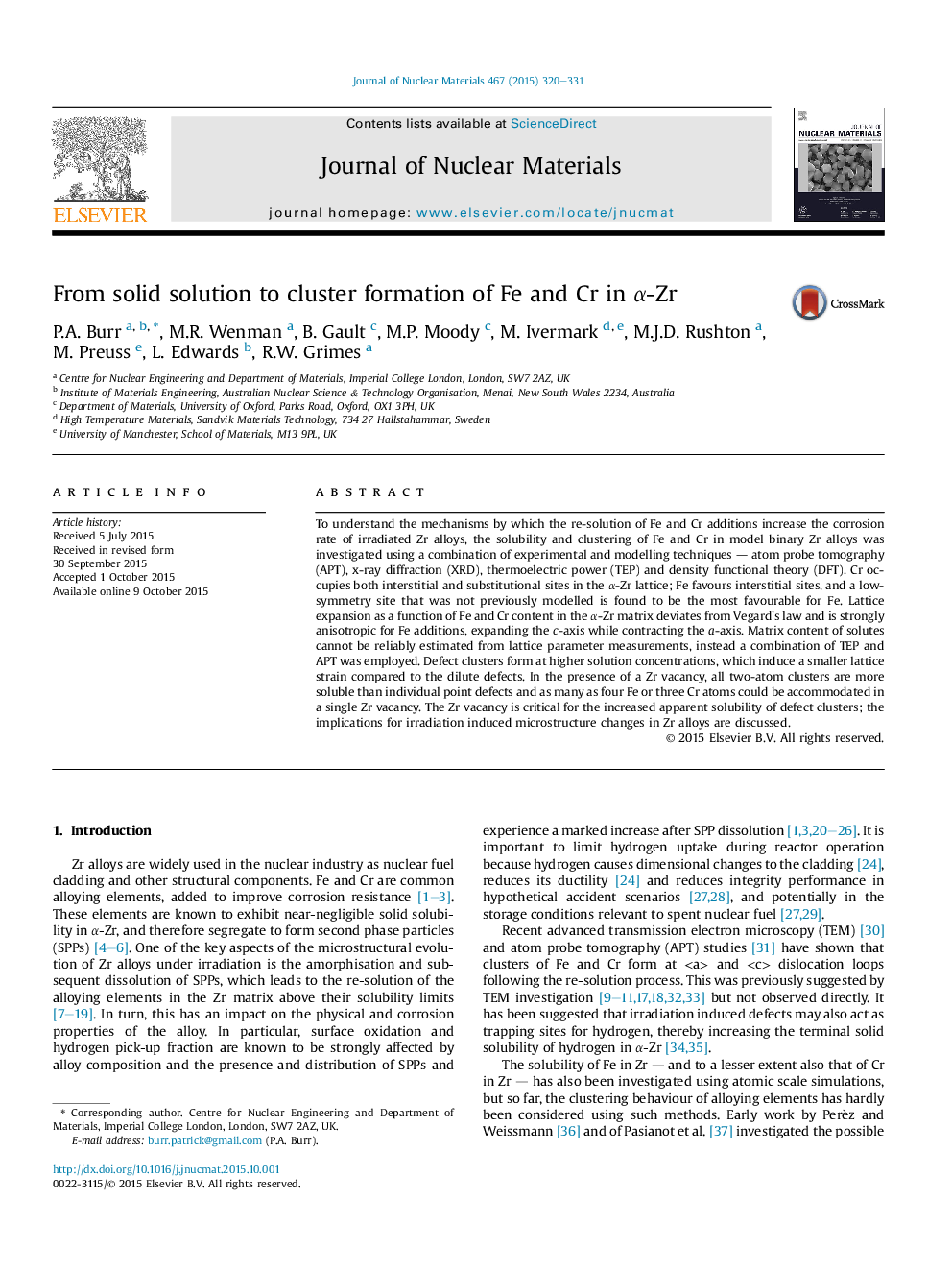| Article ID | Journal | Published Year | Pages | File Type |
|---|---|---|---|---|
| 1564889 | Journal of Nuclear Materials | 2015 | 12 Pages |
Abstract
To understand the mechanisms by which the re-solution of Fe and Cr additions increase the corrosion rate of irradiated Zr alloys, the solubility and clustering of Fe and Cr in model binary Zr alloys was investigated using a combination of experimental and modelling techniques - atom probe tomography (APT), x-ray diffraction (XRD), thermoelectric power (TEP) and density functional theory (DFT). Cr occupies both interstitial and substitutional sites in the α-Zr lattice; Fe favours interstitial sites, and a low-symmetry site that was not previously modelled is found to be the most favourable for Fe. Lattice expansion as a function of Fe and Cr content in the α-Zr matrix deviates from Vegard's law and is strongly anisotropic for Fe additions, expanding the c-axis while contracting the a-axis. Matrix content of solutes cannot be reliably estimated from lattice parameter measurements, instead a combination of TEP and APT was employed. Defect clusters form at higher solution concentrations, which induce a smaller lattice strain compared to the dilute defects. In the presence of a Zr vacancy, all two-atom clusters are more soluble than individual point defects and as many as four Fe or three Cr atoms could be accommodated in a single Zr vacancy. The Zr vacancy is critical for the increased apparent solubility of defect clusters; the implications for irradiation induced microstructure changes in Zr alloys are discussed.
Related Topics
Physical Sciences and Engineering
Energy
Nuclear Energy and Engineering
Authors
P.A. Burr, M.R. Wenman, B. Gault, M.P. Moody, M. Ivermark, M.J.D. Rushton, M. Preuss, L. Edwards, R.W. Grimes,
